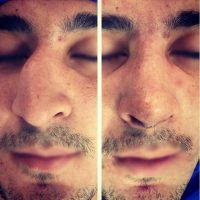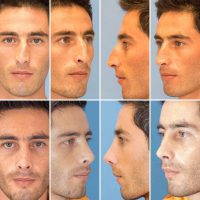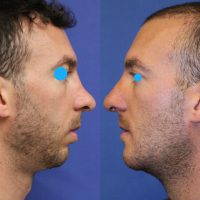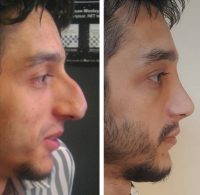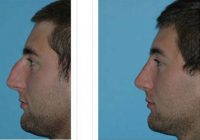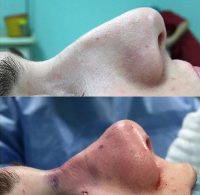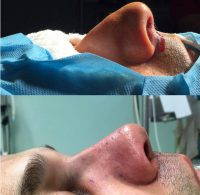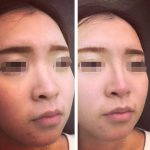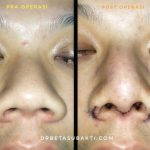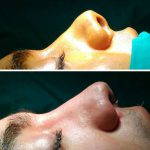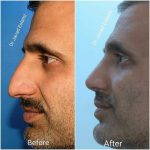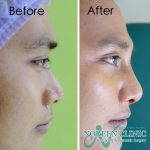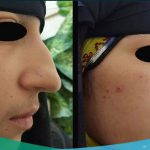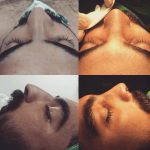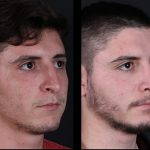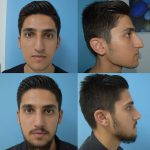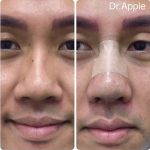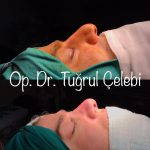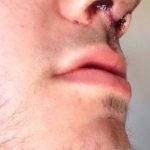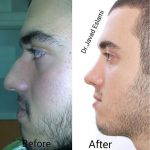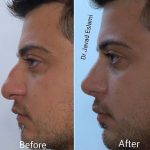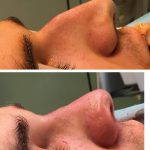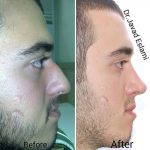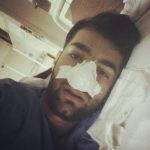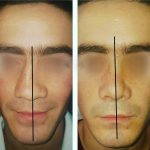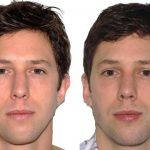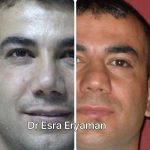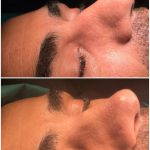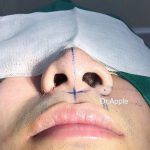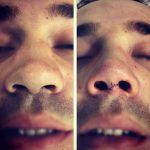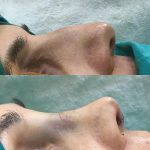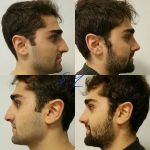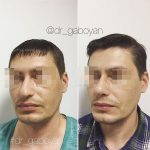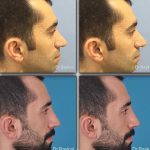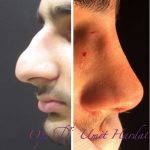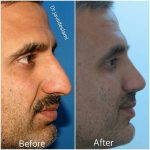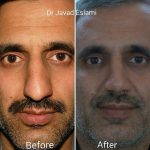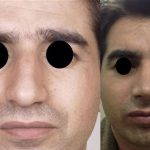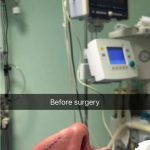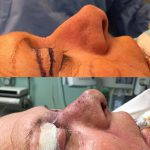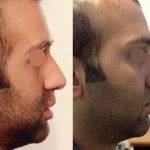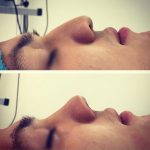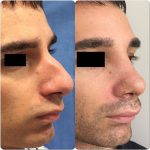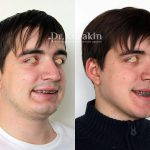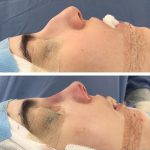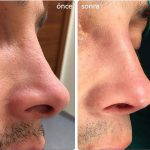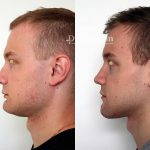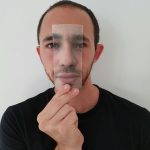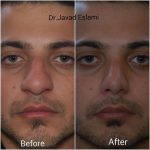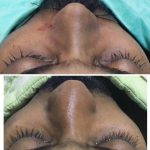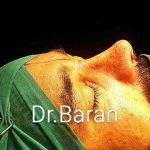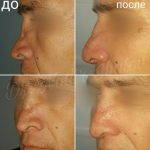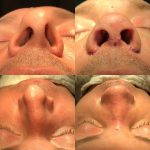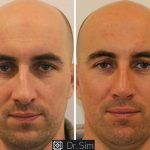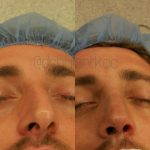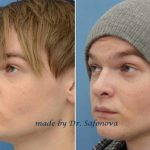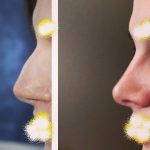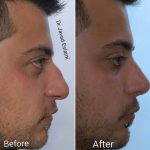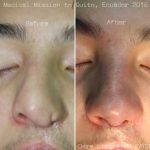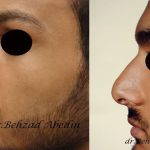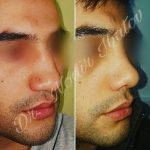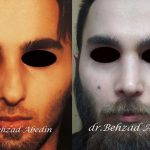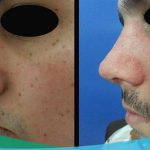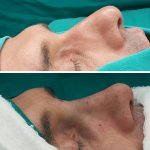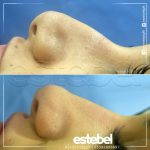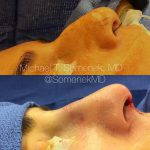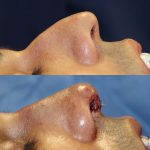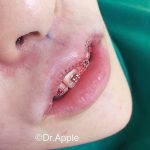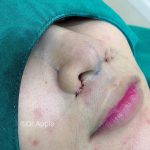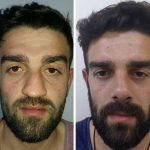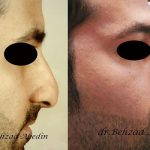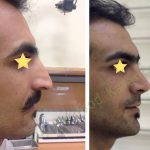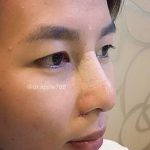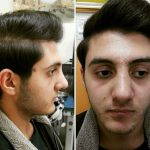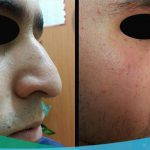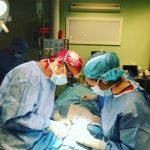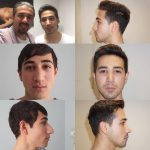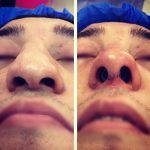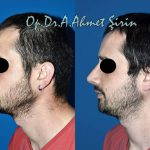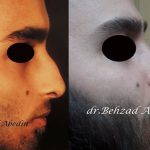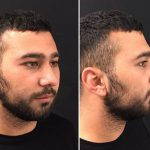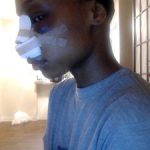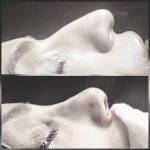Male Rhinoplasty Before And After Pictures
Male rhinoplasty, or nose shape correction is able to radically change the image of the patient. Anthropologists believe that the protruding nose of Europeans is good, since this form of nose lengthens the path of nasopharyngeal and the inhaled air is heated better.
There are the following forms of the nose with a hump or saddle nose, wide and narrow, snub-nosed. The irregular shape of the nose, or shape due to grounds of race, and even its loss, always perceived tragically. Not for nothing can find a definition that the nose is the “thermometer of human happiness.”
It is no coincidence that rhinoplasty is the most ancient aesthetic procedure. However, despite the fact that the history of rhinoplasty has more than 3000 years, the correction of nose shape and restore its function is one of the most difficult sections of plastic surgery on nose.
In addition to its aesthetic function, the nose is the beginning of our respiratory system. The air is heated, humidified, cleared and disinfected passing through the nasal passages. All these functions are performed by the mucous membrane lining the nasal cavity, where it is produced to half a liter of nasal mucus a day.
In addition, the nose is involved not only in air filtration, but also provides a process of smelling, ventilation and purification of the paranasal sinuses, and plays a significant role in the functioning of the lacrimal system.
In general, it is difficult to overestimate the importance of the nose in a person’s life. For this reason, various forms of the nose been formed in connection with the national identity under the influence of climatic conditions in the course of evolution.
Thus, residents of subtropical and tropical regions have broad noses is no coincidence because that the heat emission process occur more easily with this form of the nose. The inhabitants of the north have narrow noses because to the air is heated by passing through the nasal passage in small portions. Any aesthetic surgery, aimed at changing the external nose should not affect such important and diverse functions of the nose in the further. Aesthetic rhinoplasty involves resolving problems with nasal breathing, as simultaneously as possible.
Selecting the shape of the nose (the new structure of the nose).
Individual differences in shape of the external nose are determined by interposition of its elements of bone and cartilage. Indeed, it is difficult to find people with identical nose shape. The nose can have a different size and shape.
The contour of the nose profile depends on the structure, namely the nasal bones, and size of the angle under which they extend from the frontal bone and lateral positions of the cartilage and the nasal septum cartilage.Thus, the root of the nose can have profound, shallow, high or low position in relation to the forehead and the bridge of the nose can be convex (hooked nose), straight or concave (saddle nose). When the back of the nose line continues the line of the forehead is called “Greek profile”, which served as a model for the works of the ancient sculptors.
So, we highlight some anatomical details, before we start talking about the choice of the shape of the nose. External nose is formed by facial bones, cartilage and soft tissue (muscles of the nose, hypodermic fatty tissue and skin covering it from the outside).
The structure of the nose. The nose consists of a root, the back of the nose, the tip, wings. The nasal cavity is divided by a cartilage septum. The nasal septum is curved to the side, so nostrils may be different in size and shape.However, this difference is not visible with an overhanging tip of the nose. Great importance is given to the so-called corner the profile, which is defined between a line connecting the forehead with a chin and back of the nose.
It is believed that an ideal value is 30 degrees. Also, a significant role played by the quantity of nasolabial angle, which is approximately 90 degrees and characterizes the position of the tip of the nose. For instance, if this angle is less than 90 degrees, the nose will droop or will seem long. The shape of the nose is determined by many factors and extremely diverse.
The length, width of the nose, the type and position of the nasal septum, the nasolabial angle, back of the nose profile, the position of the tip reflected on external appearance of a person.The shape of the nostrils and tip of the nose affect facial expression: it is considered that the broad wings of the nose give the face energy, impulse, inspiration, thin nose with narrow nostrils expresses concentration, swollen nose wings reminiscent of sensuality, vitality, pointed, angular shape of the nostrils emphasizes the nervousness. For women more suited snub tip of the nose, that is a little towering above the the nasal bridge. Such a nose rejuvenates the face. Of course, with a long and narrow nose harmonizes narrow and thin tip, with short and wide – thick and wide. It will be appreciated that the surgeon considering face as a whole during analysis of size and shape of the nose, as well as other components of the face.
At the same time in order to achieve harmony are important not the individual parts themselves, and the right proportions and relations of parts to each other. A snub nose is more suitable for small woman, while the high …Keep in mind that the ideal form of the nose is not the purpose of the nose operation. Rhinoplasty is aimed at changing shape of the male nose that will in harmony with the patient’s face, giving it a unique identity.
We correct the nose in accordance with the features of the face structure. With this in mind, you should not limit the actions of the surgeon, for example, the intervention only on cartilaginous structures. This can lead to undesirable results.
Possible complications.
Any surgery carries some risk. Male rhinoplasty is no exception in this matter. When the operation is performed by a qualified surgeon in aesthetic surgery, complications are rare and usually minimal in its significance.There is a possibility of complications due to the individual characteristics of the anatomical structure, wound healing, the general reaction to surgery, including infection, nosebleed, or a reaction to medications administered during anesthesia.
The patient can significantly reduce the risk of complications if will closely follow the recommendations of the surgeon, both before and after surgery.
The result rhinoplasty unpredictable in some cases that is independent of the skill of the surgeon. It is impossible to predict the shape of the nose up to 1mm. Thus, the surgeon created the planned shape of the nose on the operating table, but the postoperative period occurs in different ways for all people, it depends on the type of the structure of his skin, as well as the peculiarities of the process of scarring.The course of the healing process can assumed by 50-70%. For example, a thick porous skin has a greater tendency to excessive scarring as compared with thin skin.
That is why, if the surgeon has promised the nose in exact accordance with the obtained picture after a computer simulation you need to know that it is deliberately false information.
As for scarring, when incisions are made in the nasal cavity (closed rhinoplasty), no part of the incision can be seen externally and a visible scar is avoided, while performing an operation “open” method or by changing the position or shape of the nostrils, small incisions are carried out in the skin area of the nasal septum or the base the nose wings, which then practically invisible.However, in rare cases, the formation unwanted of rough hems (due to a tendency to excessive scarring).
In case ineffectiveness of conservative treatment is performed surgical correction. On average, 3 cases out of 10 may require additional surgical intervention to correcting minor residual deformations and to achieve the desired result.
The surgeon must inform the patient on the possibility of re-operation on consultation.Second operation is usually performed for aesthetic reasons – for example, the appearance of unwanted rough scars, excess bone callus in the area back of the nose and drooping tip of the nose.
Secondary rhinoplasty is performed under local anesthesia no earlier than six months after the initial surgery. Sometimes patients notice changes skin sensitivity (often reduced sensitivity or numbness), or swelling in the nose area.
These phenomena can persist up to 5-6 months after surgery, and then disappear without a trace.
Male Rhinoplasty Before And After Pictures
- Male Nose Job Itself Takes Around 2 Hours To Perform
- A Male Nose Job
- A Perfect Male Nose
- Good Male Nose Jobs (1)
- Good Male Nose Jobs (2)
- Good Male Nose Jobs (3)
- Good Male Nose Jobs (4)
- Good Male Nose
- Great Male Nose Jobs (1)
- Great Male Nose Jobs (2)
- Indian Male Rhinoplasty
- Korean Male Rhinoplasty Photos Before And After
- Male Ideal Nose
- Male Korean Nose Job Pictures
- Male Model Nose Job (1)
- Male Model Nose Job (2)
- Male Model Nose Job (3)
- Male Nose Job Before After (1)
- Male Nose Job Before After (2)
- Male Nose Job Before After (3)
- Male Nose Job Before After (4)
- Male Nose Job Before And After Photos (1)
- Male Nose Job Before And After Photos (2)
- Male Nose Job Before And After Photos (3)
- Male Nose Job Before And After Photos (4)
- Male Nose Job Before And After Photos (5)
- Male Nose Job Before And After Photos (6)
- Male Nose Job Before And After Photos (7)
- Male Nose Job Before And After Photos (8)
- Male Nose Job Before And After Photos (9)
- Male Nose Job Before And After Photos (10)
- Male Nose Job Before And After Photos (11)
- Male Nose Job Before And After Photos (12)
- Male Rhinoplasty Fixing Droop
- Male Rhinoplasty Gallery (1)
- Male Rhinoplasty Gallery (2)
- Male Rhinoplasty Gallery (3)
- Male Rhinoplasty Gallery (4)
- Male Rhinoplasty Gallery (5)
- Male Rhinoplasty Gallery (6)
- Male Rhinoplasty Gallery (7)
- Male Rhinoplasty Gallery (8)
- Male Rhinoplasty Gallery (9)
- Male Rhinoplasty Gallery (10)
- Male Rhinoplasty Pictures (1)
- Male Rhinoplasty Pictures (2)
- Male Rhinoplasty Pictures (3)
- Male Rhinoplasty Pictures (4)
- Male Rhinoplasty Pictures (5)
- Male Rhinoplasty Pictures (6)
- Male Rhinoplasty Procedure Before And After (1)
- Male Rhinoplasty Procedure Before And After (2)
- Male Rhinoplasty Procedure Before And After (4)
- Male Rhinoplasty Procedure Before And After (5)
- Male Rhinoplasty Procedure Before And After (6)
- Male Rhinoplasty Procedure Before And After (7)
- Male Rhinoplasty Procedure Before And After (8)
- Male Rhinoplasty Results (1)
- Male Rhinoplasty Results (2)
- Male Rhinoplasty Results (3)
- Male Rhinoplasty Results (4)
- Male Rhinoplasty Results (6)
- Male Rhinoplasty Results (7)
- Male Rhinoplasty Results (8)
- Male Rhinoplasty Rhinoplasty Is A Procedure To Reshape The Nose Into A More Aesthetically Pleasing Form
- Male Rhinoplasty Tends To Increase Confidence Or Boost Self-esteem
- Male Tip Rhinoplasty
- Photos Of Male Rhinoplasty Surgery (1)
- Photos Of Male Rhinoplasty Surgery (2)
- Photos Of Male Rhinoplasty Surgery (3)
- Photos Of Male Rhinoplasty Surgery (4)
- Photos Of Male Rhinoplasty Surgery (5)
- Photos Of Male Rhinoplasty Surgery (6)
- Photos Of Male Rhinoplasty Surgery (7)
- Photos Of Male Rhinoplasty Surgery (8)
- Photos Of Male Rhinoplasty Surgery (9)
- Photos Of Male Rhinoplasty Surgery (10)
- Photos Of Male Rhinoplasty Surgery (11)
- Photos Of Male Rhinoplasty Surgery (12)
- Photos Of Male Rhinoplasty Surgery (13)
- Photos Of Male Rhinoplasty Surgery (14)
- Photos Of Male Rhinoplasty Surgery (15)
- Pictures Of Male Noses (1)
- Pictures Of Male Noses (3)
- Rhinoplasty Guys (1)
- Rhinoplasty Guys (2)
- Rhinoplasty Guys (3)
- Rhinoplasty Guys (4)
- Successful Male Nose Jobs
- Userimage-553097
- Young Male Rhinoplasty
